Dystopian Farm: the UK dairy industry & its technofixes
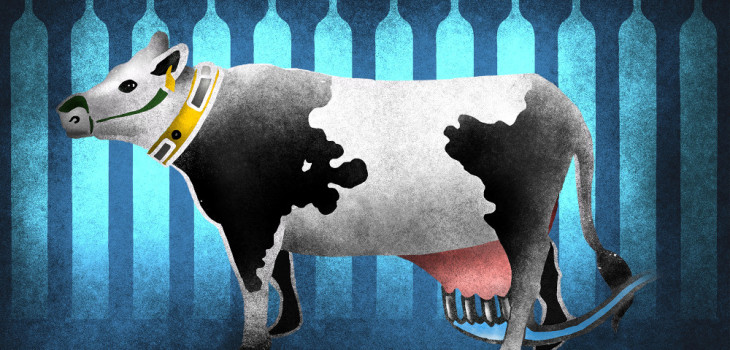
Note: Many of the companies discussed in this article can be found exhibiting at the annual Dairy-Tech Fair in Stoneleigh Park. Also see our interactive guide to the companies and their technologies.
We are in the midst of the Fourth Industrial Revolution. All areas of our lives have been permeated by technological interference. Agriculture, an inherently slow practice governed by nature’s cycles, has been particularly susceptible to technofixes – the use of technological solutions to address real or perceived problems. The most sought after technologies are those that promise to speed up those biological cycles and eliminate genetic variation for productivity and profit.
Here we look at technofixes specifically in the context of the UK dairy industry. The decline of this industry over the past 50 years has added to the pressure on farmers to incorporate dystopian technologies – that is, products which impose extreme levels of surveillance and control on living beings.
In this report, we set out the technological changes taking place in the industry and the corporate interests driving them, including:
- the intensification of livestock-rearing;
- the growth in the genetic uniformity of livestock, and moves towards gene edited plants and animals;
- total systems of tagging and tracking;
- the full automation of the milking process; and
- the use of technofixes to reduce the carbon footprint of the industry.
Despite some efforts to portray these technologies as beneficial to the animals, many in fact have severe implications for their welfare and freedom – as well as for our relationship with our food.
Dairy’s decline
The UK dairy industry is in trouble. People in the UK drink half the milk they did 50 years ago, and the image of the milkman delivering glass bottles to people’s houses is now largely a throwback to the past. Individuals are consuming smaller quantities of the white stuff, and growing numbers are abandoning it altogether.
Why? Changing tastes, the growth in alternatives, and rising disposable income are all to varying degrees likely to have influenced this shift.
However, the rise in veganism on environmental, animal rights or human health grounds has certainly been a factor in recent years. Besides concerns over significant land and water use, the meat and dairy industries continue to draw heavy criticism for their role in climate change – mainly through deforestation for animal feed crops and methane emissions from burping cows. Some scientists argue that avoiding meat and dairy is the “single biggest way” to reduce our impact on the planet.
Animal rights concerns range from the repeated impregnation of cows to produce milk, and the toll this takes on their bodies; the distress caused by the forced separation of mothers from their calves; the treatment of male calves, many of whom are shot at birth for economic reasons; and cows generally being treated as machines rather than sentient beings with their own desires. Finally, health concerns include the relationship between high levels of milk consumption and diabetes, heart disease and cancer.
Meanwhile, the huge growth in alternatives has inevitably made ditching dairy more thinkable; a third of the UK population is now drinking plant-based milks – either alongside or instead of cow’s milk.
Another major blow has been Brexit, which has significantly worsened the outlook of the industry. Milk and cream sales to the EU were down a whopping 96% in the year 2020-21 – over twice that of the 40% overall decline in food and drink exports. Sales to the EU represented nearly 80% of the UK’s total pre-Brexit dairy export, and things are so bad that the government is planning a lump sum payment scheme of up to £100,000 for farmers wanting to exit the business.
In the context of this slow-burning crisis in reputation, demand and sales, many farmers have been turning to technological solutions.
The Rise of the Megadairies
Despite the declining market, there are still some 8,000 dairy producers in the UK. While the actual dairy cow population across the country has dropped by at least 28% since 1996, there has been a corresponding population concentration and an intensification in farming practices. The number of UK dairy farms with large herds has grown, while the number with small ones has shrunk. This is a pattern that is echoed across different livestock and cereals sectors. There has also been a “stealth rise” in the number of so-called megadairies – farms whose dairy herds number over 700 cows.
Yield has grown too: despite the fall in the overall number of cattle, farms have become more extractive, with quantities of milk produced per UK cow increasing 100% since 1975. This has been achieved through numerous technologies, the main being selective breeding and automation. Yet in an unending quest for productivity, these technologies are themselves undergoing major change.
Technofixes
From selective breeding to gene-edited animals?
Selective breeding has been one of the biggest factors behind this increase in milk production over the past few decades. Like all livestock today, the modern dairy cow is a very distant beast from her wild ancestors. Generations of human control over reproduction, particularly since the Agricultural Revolution in the 18th century, has ensured that cattle are produced with the most desirable traits for milk production – such as docile personalities and a high yield.
How is milk produced in 2022?
To make sure cows give birth as often as is physically possible – and bear equally productive offspring – dairy cows in industrial societies are often artificially inseminated with semen from highly-selected stock every year.
Various low-tech methods have been used throughout history to monitor whether cows are in heat, so ready to be impregnated. These include marking their tails with paint (if it rubs off, it indicates the cow has been mounted) – to a teaser bull (a castrated bull which mounts cows in heat without impregnating them). Today, various forms of sensors are used to monitor whether a cow is able to become pregnant.
After nine months of pregnancy, the calf is taken from the mother within just a few days to enable her milk to be sold, despite the distress this causes to both. The mother will be milked continuously, and impregnated again within 2-3 months of the last birth. The cycle continues until she is around six years’ old and no longer productive, at which point she will be slaughtered. Cows not subjected to this treatment can live until the age of 20.
To ensure milk production for 10 months of the year, dairy cows are required to give birth to a calf every year. This growth in ‘productivity’ of the animal due to selective breeding has, unsurprisingly, resulted in health issues, a shorter lifespan, and reproductive problems.
Selective breeding for particular traits using a very limited gene pool has resulted in extreme inbreeding. Virtually all the world’s Holsteins, a top dairy breed, descend from just two bulls bred in the 1960s. Due to the degree of inbreeding, although there are 9 million Holsteins in the US, their “effective population” stands at just 43. In the wild, animals with an effective population of less than 50 are classed as being at immediate risk of extinction. But this won’t happen to Holsteins, since the industry’s total control over their reproduction forces them to continually give birth.
In the UK, the rate of inbreeding has risen significantly since 1990. A 2004 study in the Journal of Dairy Science identified that between 96-98% of UK Holsteins were inbred to some degree, compared with around 50% in 1990. Yet there are clear limits to what this technofix can achieve: extreme selective breeding based on “productive” characteristics can in fact lead to lower productivity due to disorders and health problems.
Top dairy cattle genetics companies
Genus
A publicly-listed British company which supplies “elite breeding animals, semen and embryos to over 50,000 customers in over 80 countries, including the majority of the world’s Top 100 pig and dairy farmers.”
The company’s work in the dairy and beef industries is mainly conducted via ABS Global, a huge US livestock genetics company and subsidiary which it acquired in the late nineties. The acquisition led to what at the time was described as the “largest artificial insemination company”. Top shareholders include Capital Group, Baillie Gifford and BlackRock.
Urus
A US-based cattle breeding group comprising Alta Genetics, GENEX, Jetstream Genetics, PEAK, SCCL, and VAS. The company says it inseminates “1 cow every second across the globe”.
Viking Genetics
A cooperative formed of a merger between Denmark and Sweden’s artificial Insemination centres. It is “owned by 20,000 dairy and beef farmers" in Denmark, Sweden and Finland.
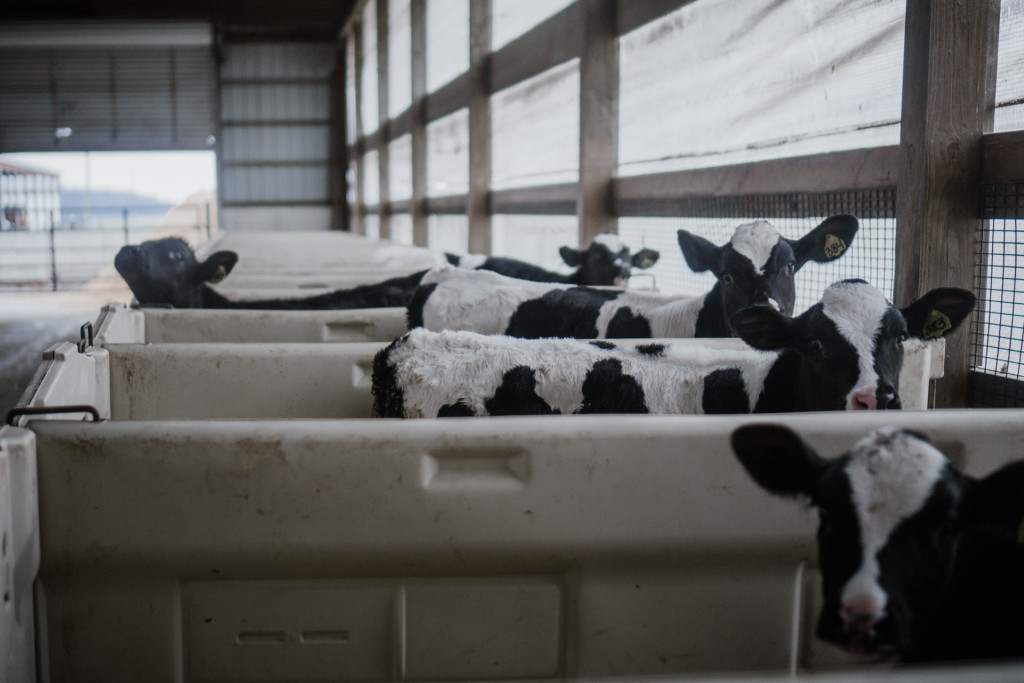
Photo by Amber Kipp on Unsplash
If there wasn’t already enough interference in cows’ reproduction, a new and more disturbing development is on the horizon: gene editing (“GE”). This is a form of genetic modification which enables breeders to achieve traits not possible by simple artificial selection, for example, cattle that are faster growing, hornless, or disease resistant.
Gene Editing or Genetic modification?
Biotech lobbyists have sought to distinguish gene editing from GM in a bid to lose GM’s heavy baggage. Genetic Modification involves taking genes from certain organisms and inserting them into the DNA of another. Gene editing involves adding, removing or modifying the genes of organisms, but generally not mixing the genetic material of different species. However, many environmentalists do not distinguish between the two and believe that gene editing should be seen as a new technique of genetic modification (“new GM”).
The use of Genetically Modified (“GM”) plants is tightly controlled in the UK and GM crops are not grown here commercially, though there have been trials. But that is largely a legacy of EU membership, and Brexit has shifted the goal posts. A European Court of Justice ruling had kept gene editing at bay on the continent by refusing to recognise a distinction between GE and genetic modification. Yet in the wake of Brexit, the government wasted absolutely no time in overturning existing protections, and in January 2021 it ran a “consultation” on whether gene editing should be treated more leniently.
Despite 88% of individual respondents supporting the continued regulation of gene editing as GM, the government announced regulatory changes on the practice just a few months later. It said it would “cut red tape and make research and development easier”. A “Precision Breeding” Bill is now going through parliament to provide a minimal regulatory framework for the research and commercial production of GE plants and animals. For the time being, this will allow scientists to carry out research on gene-edited crops in England with less red tape and expense. The government has also made it clear that in the longer term, there would be a “review of England’s approach to GMO regulation more broadly”.
According to Gideon Henderson, the chief scientific officer at DEFRA, engineered livestock will be next. Genetics companies such as Genus have been developing GE livestock for years, and powerful lobbyists such as the National Farmers’ Union are predictably pushing for its use. It doesn’t help that George Eustice – former UKIPer, best friend of the dairy industry, and current Agriculture and Environment Minister – is a strong advocate of the technology. The spin is already being spewed, with the government claiming that “gene editing has a vital role to play in helping address animal welfare concerns and reducing the carbon footprint of livestock production”.
Environmental groups emphasise the distinctive set of risks that gene editing carries to both the individual organism and the environment. For one, claims that it is a precise art have been strongly disputed. It can bring about unexpected mutations, and new or increased levels of toxins or allergens in plants. When US biotech start up Recombinetics used gene editing to produce hornless dairy calves, they also accidentally introduced genes from another species (bacteria which had been used to carry out the process), that conferred resistance to three antibiotics. It is feasible that these genes could transfer to disease-causing bacteria, rendering them resistant to antibiotics and potentially posing a risk to humans. The error was only picked up in checks by the US Food and Drug Administration, oversight which Recombinetics had vociferously resisted. And by that point the genetic trait is thought to have been passed down to the animals’ offspring, at least some of whom were subsequently culled. The project, initially heralded as a breakthrough for animal welfare with “no unwanted effects”, turned into a disaster.
Major UK research sites working on gene editing
 Rothamsted Research
Rothamsted Research
Established in 1843, Rothamsted describes itself as “the world's oldest agricultural research institute”. It is based in Hertfordshire and also has sites in Devon, Suffolk and Bedfordshire. The centre runs field trials of GM and GE crops.
In 2012, hundreds of anti-GM campaigners protested at the site of its GM wheat trials with the stated aim of ripping up the crops. Its website was then hacked in an action claimed by members of the Anonymous hacker movement. The institute has recently been working on gene editing feedcrops for cattle and sheep that would reduce the animals’ methane emissions.
 John Innes Centre
John Innes Centre
A research centre in Norwich specialising in plant science and genetics. It carries out gene editing experiments and is a strong advocate of GE. While it focuses on “providing resources to the academic community”, it also touts its services to corporations, for example, by selling technology to modify cereals and brassicas.
 Roslin Institute
Roslin Institute
A centre at the University of Edinburgh focused on genetics research in support of agribusiness. The Roslin Insititute’s director, Bruce Whitelaw experiments in the “development of genetically engineered livestock for biomedical and agricultural applications”. He is also on the advisory board of Recombinetics. The Institute is noted for having created Dolly the Sheep, the first cloned mammal. It has partnered with genetics company Genus to produce gene-edited pigs for the pork industry.
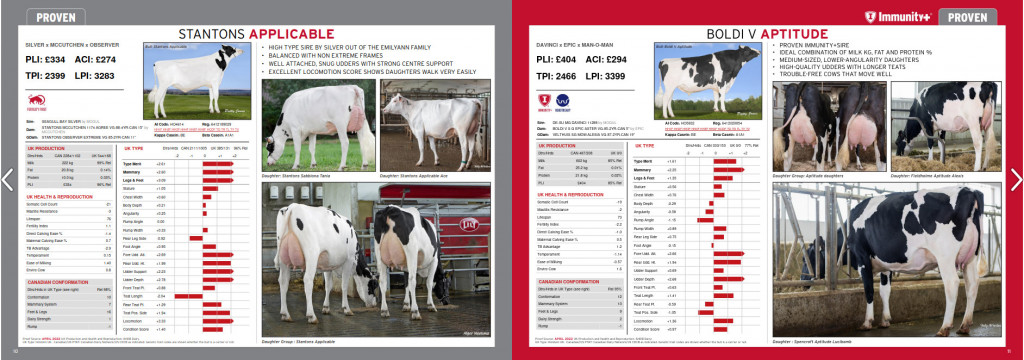
Livestock genetics companies have catalogues featuring grotesquely oversized, specially-bred animals, such as the ones in these Semex magazines
Gene-edited hornless cattle are a clear example of how technofixes can be a means to profit from a “problem” that is itself manufactured by industry. In industrial agriculture, calves routinely have their horns removed with searing hot irons in a process known as “disbudding”. It’s an extremely painful and distressing procedure for the calf that can result in the animal losing consciousness. The rationale is to prevent cattle from injuring each other – and people – either during transportation or through their otherwise cramped and stressful conditions. GE hornless cattle are promoted as a solution to the hassle and pain of disbudding. But that “need” is entirely the product of a certain farming culture, and in many parts of the world farmers do not remove the animals’ horns at all.
Gene editing takes selective breeding to another level by allowing scientists to increasingly pick and choose specific genetic traits desired for mass reproduction. But as we’ve seen, artificial selection has resulted in dangerous levels of inbreeding. To paraphrase Friends of the Earth, whereas ecological resilience lies in species’ diversity, GMO science relies on predictability. Gene editing will only take us further down the disastrous path of uniformity with the added risks involved in manipulating DNA itself.
‘Robot-ready cows’
Over the course of the 20th century, hand milking was replaced by a combination of automated and manual processes. The total robotisation of the milking process has been growing since the 1990s, with 10% of UK dairy farms using fully-automated systems in 2019. In other Northern European countries, home to the leading suppliers of robotised milkers, the figure is double that.
It works like this: cows wear RFID chips, which allow them to be identified. Incentivised by the lure of food, they pass through checkpoints and either enter a single machine, or a stand in a large rotary unit. Robotic arms locate, sterilise, hose down and attach themselves to the cow’s udders. Sensors monitor the cow’s output, how much milk each teat gives, and whether there are any changes to the milk. After milking, the gate opens and the cow leaves.
Robotisation is claimed to increase yield and significantly decrease labour requirements. It is also presented as beneficial to animal welfare, since many systems rely on the cow entering the milking system ‘voluntarily’ to access food.
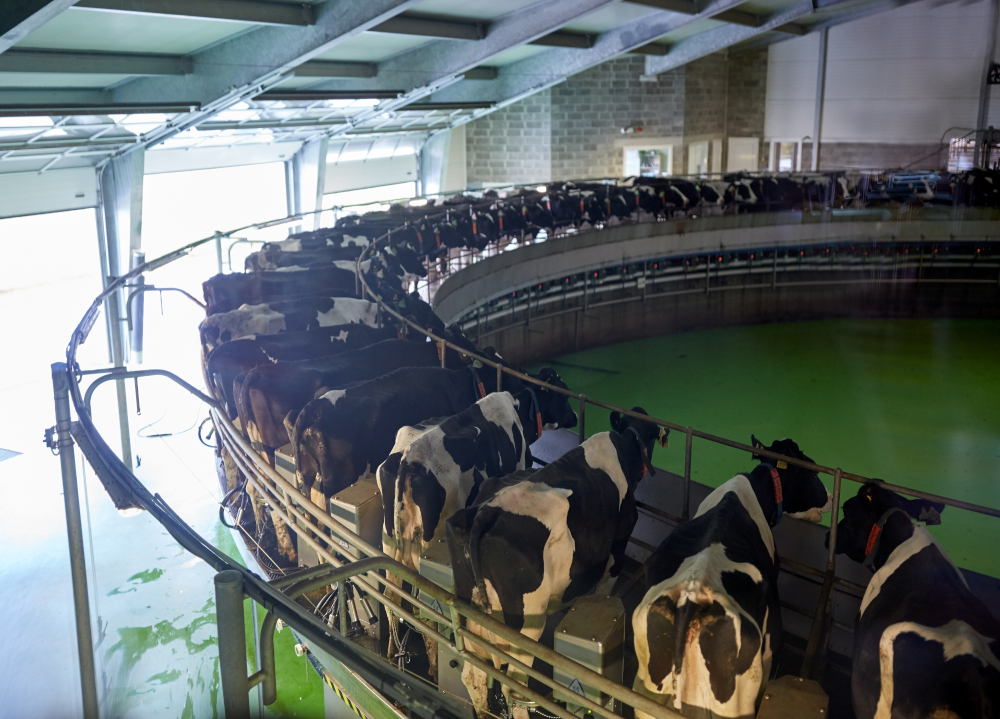
A rotary milking parlour. Image: dolgachov
Who’s behind the milking robots?
 DeLaval
DeLaval
Part of the Swiss food and packaging multinational Tetra Laval Group, which is perhaps better known for another of its subsidiaries, Tetra Pak. The Group is owned by a “trio of billionaire siblings” from the Rausing family. DeLaval is one of the oldest producers of milking machinery, with a 125-year history of manufacture.
 GEA
GEA
A German engineering giant which describes itself as “one of the world’s largest systems suppliers for the food, beverage and pharmaceutical sectors”. GEA’s humble pre-war beginnings were in technology to improve hygiene in the dairy industry, and it still counts dairy processing as one of its main lines of work.
 Lely
Lely
A private Dutch multinational that produces agricultural machinery, particularly robots for the dairy industry.
 BouMatic Robotics
BouMatic Robotics
Another private Dutch company which in its own words, “focuses on introducing robots into dairy farming”. The company makes the robots itself in its 5000m2 factory in Emmeloord, Netherlands. The firm dates back to the 1930s.
Yet automation of the process is clearly not enough: the animals too must “evolve” along with the machines. Enter the “robot-ready cows”. These are cows specially bred by livestock genetics companies like Semex for traits best suited to being milked by a robot. Such traits include the “correct” udder shape and length to ensure a good fit with the machines, higher milking speeds, and pliable personalities. Animals who do not adapt well to this new conveyor belt regime are likely to be culled.
Why stop at extreme selective breeding and genetic modification? In the eyes of some agritech companies, hormonal cycles are fair game too. While injecting hormones to stimulate milk production is banned in the UK and EU on animal health grounds, some companies are using light to manipulate the animals’ natural cycles. The lighting reportedly influences their circadian rhythms to stimulate hormones and increase milk yield, as “the cows’ reproductive cycle must be tricked into resuming it earlier than is natural”. Kew LED and Dairy Light are two such companies in the UK marketing LED lighting in cattle sheds which can deliver “summer-light conditions all year-round”.
Sensors and shocks
Automated milking relies heavily on the use of sensors, truly the biggest fad today in animal agritech. Sensors are in the cowsheds, on the milking robots, in the fields, attached to the animals, and even in their guts. There’s now a plethora of startups competing to sell various forms of livestock surveillance gadgets, often promoted under the guise of animal welfare. From “facial recognition for cows” to bluetooth ear tags, these sensors monitor the animals’ movements, hormonal cycles, health and behaviour. Again, most of these factors are essential to achieving one key objective: a higher pregnancy rate. A sick cow is an unproductive cow.
Some startups have gone yet a step further: shock collars to control the movements of “free range” cattle. These are inevitably not marketed as such; instead they’re presented as a way of allowing livestock to graze in the fields and save on fencing costs. As the animal approaches the invisible boundaries determined by the farmer, the collar emits a sound. And if the cow doesn’t turn around, they receive an electric shock.
“Draw your virtual fence anywhere on your property, and your cattle are trained to remain within the virtual barrier”, says one supplier. The idea is that the area can easily be moved to cover fresh terrain by simply redrawing the map boundaries. Yet we can only guess at how much confusion this will cause the cows, as they tentatively navigate the edges of an entire perimeter in search of untouched pasture. This is to say nothing of the impact on their ability to run around as they would naturally. The lack of the usual visual clues could be disorientating for the animals, and as the RSPCA point out, some cows learn how to avoid the shocks far more quickly than others. A number never quite get to grips with how the system works, to their detriment and suffering.
Another danger of these technologies is that they’re invisible to people as well. The public will be unaware that free-range cattle in the fields may in fact be bombarded with sounds or electric shocks, and may object less to this practice than seeing farm hands with electric cattle prods.
A few taps on a farmers’ phone and automated feedlots can release more pellets, cows can be corralled, and udders can be hosed down from the comfort of the farmers’ living room. In many cases these things can happen entirely automatically, and the modern farmer need have very little real contact with the animals at all.
Will these gadgets have any beneficial impact on animal welfare as claimed? Automation will reduce contact with farmers, which can be stressful for the animals. But equally, being corralled and controlled by unseen machine systems such as virtual fence shock collars, is likely to be confusing and potentially even more distressing.
While some of the sensors also pick up on health problems, most issues detected will require human intervention. Given the severe impact of alienation on our relationship with nature (and each other), we have to wonder whether farmers who have less contact with their animals will have the same degree of care. Meanwhile, sensors will not be the magic bullet in disease detection. They can be unreliable and malfunction, while the growth in dependency on machines can potentially degrade the knowledge of farmers long-term.
Companies producing livestock sensors
Shearwell Data
Shearwell Data is the “market leader for cattle and sheep tags in the UK”, including electronic tags. It is owned by the Webber family and based in Wheddon Cross, Somerset.
LIC
A New Zealand-based agritech company with offices in the UK, Ireland and Australia. It is a cooperative owned by farmers and describes itself as one of NZ’s largest private investors in agricultural research and development. LIC supplies electronic tags and collars, as well as livestock semen.
Nedap
A Dutch multinational which describes itself as a pioneer in RFID technology, particularly in cattle management, for which it supplies “smart” neck and leg tags. Nedap also produces robotic cow corralling technologies and automated feeding systems, as well as a range of technologies of non-agricultural application, such as ANPR, access control tools such as card readers, and RFID tags for products in shops. Nedap has offices in Reading. It is listed on the Amsterdam-based Euronext exchange.
Datamars
The product of a merger between Swiss watch producer Audemars and Italian data firm Datalogic. Datamars is now in electric fencing, livestock tagging and pet tracking through its various brands.
Ceres Tag
Ceres Tag claims to be the “first animal monitoring information platform with direct to satellite capability”, developed with the Australian research agency Csiro. In the 1950s, Csiro was responsible for releasing the virus that causes myxomatosis to control rabbit populations in Australia. This resulted in the evolution of myxomatosis-resistant rabbits.
SmaXtec
SmaXtec is a company trying to gain a competitive edge by taking the entirely unnecessary step of forcing cows to ingest 13cm "boluses”: tracking devices which emit signals from within the cow’s stomach to the farmers’ phone. The Austrian company also has a presence in Derbyshire.
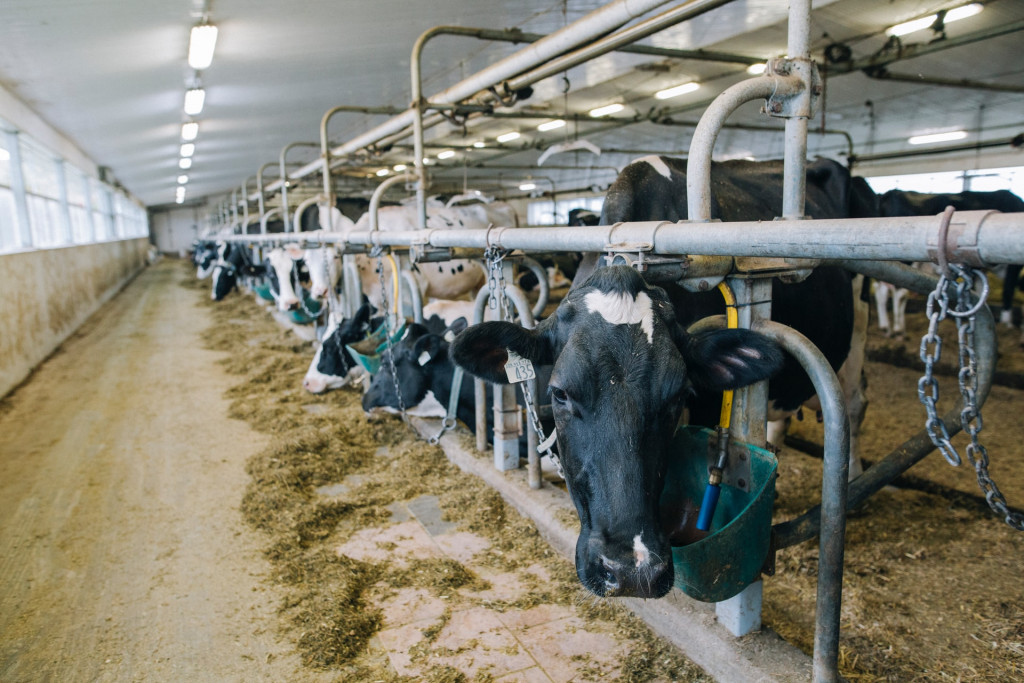
Photo by MRC Témiscamingue on Unsplash
Low-emission cows?
Double-speak is rife on Dystopian Farm: from shock collars sold as necklaces of freedom and sensors merely monitoring the animals’ health, to ‘low-emission’ cows. Indeed, the environmental impact of the dairy industry is one more issue that technofixes claim to be able to reckon with.
Of all livestock, cattle produce the highest rate of greenhouse gas emissions by far (62% of the total emissions from livestock farming). Methane is over than 20 times more potent than carbon dioxide. While some people are opting to cut dairy and beef altogether, many scientists are developing technofixes to prop-up the industry. Zelp (Zero Emissions Livestock Project), a startup launched at the Royal College of Art, has developed cattle masks which convert methane to CO2. Cargill, agribusiness giant and animal feed provider linked to massive Amazon deforestation, will be the exclusive distributor of this “green” technology in Europe. Other solutions being explored in the UK include breeding cows or gene editing their food crops so that they burp less; while technologies currently being developed abroad include using gene editing to remove the predisposition towards certain gut bacteria, and even developing vaccines against their natural gut microbes.
Yet as Friends of the Earth point out, gut flora is essential to animals’ immune systems, and interference may have serious health implications. Rather than invest in education to influence food production systems and more ethical dietary choices, many researchers are choosing to put their money into the continued manipulation and exploitation of animals’ bodies. For some, the devasting impact of animal agriculture is merely another business opportunity. They know full well that despite the growth in veganism, meat and dairy consumers are still in the distinct majority, and it’s more profitable to sustain these industries – even through extreme technologies – than it is to invest in education and alternatives.
Conclusion
By monitoring and controlling their movement, their environment, their production and reproduction, their physical traits and even their personalities, corporations have attained truly totalitarian control over livestock.
Many of these technologies are no doubt effective in achieving their narrow, short-term objectives of increasing yield and profit. There is after all no shortage of eager entrepreuneurs – nor for that matter, venture capitalists willing to throw money at them.
But whether we actually want this dystopian picture is an altogether different question. Dominating nature begets problems, both for animal and human health. Milk production, circadian rhythms and genetic variation all exist for very important reasons, none of which relate to corporate profit. The full dangers of interference with these natural processes are still unknown to us, but the documented impact of extreme selective breeding on animal health and the tale of the gene-edited cattle should spell alarm.
Ditching meat and dairy, consuming local produce, working with nature’s cycles, supporting small-scale farming; many solutions to meet our food demand such as permaculture are slower, low tech, and won’t produce big bucks for start ups and their investors. But they’re often healthier, lower impact, and far more ethical. And crucially, they’re also within people’s reach, offering possibilities for autonomy from multinationals and their machines.
What can we do?
If you’re disturbed by many of the developments discussed in the article, there are things you can do. Go vegan, subscribe to a locally-grown veg box scheme, and participate in seed swaps to preserve genetic diversity. Get active in campaigns against animal abuse and GM. And participate in this year’s Earth First! summer gathering to learn more about active campaigns for environmental justice and animal rights, skill up, and get involved.
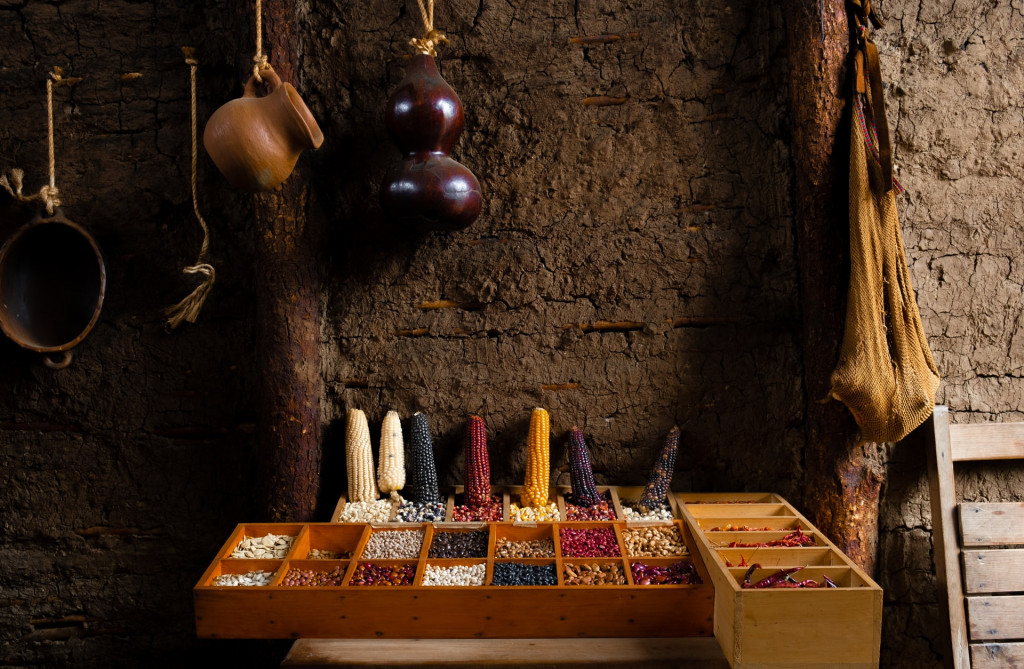
Corn in Mexico, where small-scale farmers are keeping the genetic diversity of the crop alive. Photo by ALAN DE LA CRUZ on Unsplash


 Rothamsted Research
Rothamsted Research 
 DeLaval
DeLaval